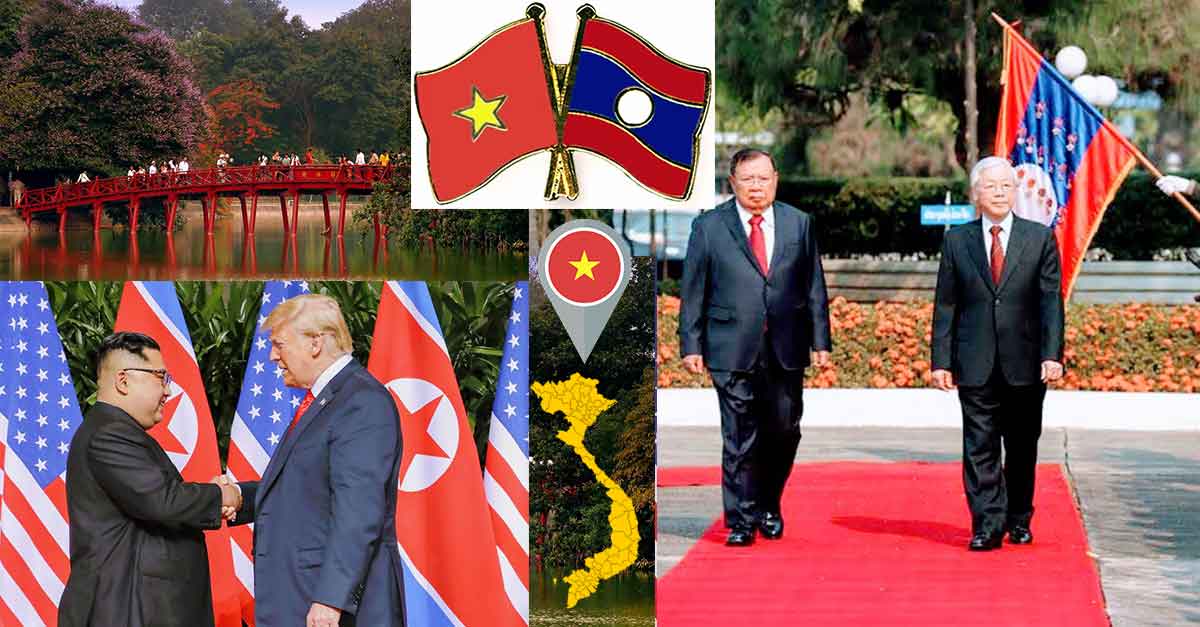The second US-DPRK summit on the denuclearization of the Korean peninsula to be held between US president Donald Trump and North Korea’s supreme leader Kim Jong Un may be just days away in Vietnam’s capital Hanoi, yet the neighboring country’s top leader has taken the time to visit close neighbor Laos and its capital Vientiane.
Laos’ President and Party Secretary-General Bounnhang Vorachit played host to his Vietnamese counterpart Vietnam President Nguyen Phu Trong from Feb 24-25 ahead of what promises to be another momentous occasion for diplomacy, this time on the other side of the Annamite range.
According to many angles and the official statements, visit itself reflected the latest reaffirmation of the tight links between the two nations, administrations and ruling parties and chances to ink more bilateral deals. The visit also comes following the death in office of Vietnam’s Tran Dai Quang from a viral illness in September 2018.
As was expected, the pair witnessed the signing of nine agreements with the aim of fostering more effective cooperation in economics, culture, education, public health, science and technology, defense and security and to prevent illegal border trade.
Key themes included financial cooperation, construction of the Vientiane-Vung Ang railway, and electricity and mines development, according to a joint statement.
Amid the efforts to strengthen the two nations’ famed “special solidarity,” there is no doubt that discussed behind closed doors was this week’s momentous second so-called Trump-Kim summit and its ramifications for both countries, the region and the world.
The Second Summit sees ASEAN member Vietnam playing a pivotal role in the hosting of the summit following the initial meeting in Singapore.
Following on from the previous meet in Singapore, the strategic choice of Hanoi provides an example of Vietnams increasingly deep economic links to the US while maintaining its Marxist-Leninist single-party political institutions.
Playing host just a few days in advance in Vientiane, Lao leaders and senior officials could have expected to be briefed on the preparations for the summit which have also serve as the latest step in rapprochement between Hanoi and Washington, whose bilateral relationship has been on a long and steady improve despite the weight of war history.
With diplomats professionally tight-lipped and precious little being made public about the insights shared by Lao and Vietnamese sides on the topic, one is left to speculate on what was discussed about the prospects for Trump and Kim’s second big meeting.
The move comes after US State Department spokesman Robert Palladino told a news briefing that US Special Representative for North Korea Stephen Biegun said US-Vietnamese history “reflects the possibility for peace and prosperity.”
“We moved past conflict and division towards the thriving partnership we enjoy today,” Mr Palladino said.
Naturally, a similar thing could be same about US-Laos relations.
So with Vietnam being held out by the US as exemplar-in-chief of the potential benefits for a single-party state like the DPRK to embrace the market and a locally-acceptable form of state-led capitalism, the time appears ripe for Laos neighbor to capture some long sought for concessions as the recently awarded granting of permission to Vietnam Airlines to access the US.
How could Vietnam (and the US) help Laos to benefit too? Or do we wait patiently for the announcement of a Trump-Kim Summit Mk III, with Air Force One and the DPRK’s most famous train passenger finding a timely connection to VTE, LPB, ZVK, PKZ or perhaps in the tubing in VV?



